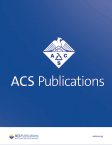化学品暴露的多重宇宙:征集能在实验室内外提供准确毒性和暴露数据的论文
IF 3.4
Q2 PUBLIC, ENVIRONMENTAL & OCCUPATIONAL HEALTH
引用次数: 0
摘要
作为 ACS 化学健康与安全虚拟特刊 "化学暴露的多重宇宙 "的一部分发表。美国化学学会化学健康与安全分会(ACS CHAS)正在为虚拟特刊(VSI)征集论文,该特刊介绍了工人、研究人员和公众可能遇到的不同类型的化学暴露。正如 ACS CHAS 以前的出版物所示,(1-8)职业化学品暴露(慢性和急性)的预防、缓解、管理和应对是多方面的。例如,创客空间、棕榈油厂、实验室、医疗设施和艺术品修复都必须量化和控制化学品暴露,尽管方式各不相同。本 VSI 将通过整理毒理学、工业和化学卫生学、化学、工程学、流行病学、卫生学、教育学、公共卫生和公共政策等所有相关学科的观点和研究,展示该领域具有影响力的贡献。世界各地的社会都依赖合成化学品来维持现代生活水平。现在比以往任何时候都更有必要在最大限度地利用化学品带来的好处的同时,最大限度地降低化学品从受控工业环境转移到各种环境所带来的固有风险。联合国在其 2022 年可持续发展目标(SDGs)(9) 中承认了这些挑战,其中包括:(i) 确保良好的健康和福祉 (3),(ii) 减少不平等 (10),(iii) 体面工作和经济增长 (8),(iv) 工业和基础设施创新 (9),(v) 负责任的消费和生产 (12)。因此,当务之急是通过收集、验证和分析各种职业环境中的化学品暴露数据来支持联合国可持续发展目标,并最终提供可靠的科学报告和工具,为有效决策和风险管理提供依据。在建立准确的毒性和接触限值方面取得了巨大的进步和发展,并在保护人类健康的同时为提高生产力做出了无数努力。本期旨在收集、强调和传播当前的研究、新的发展和研究成果,以及来自 "战壕 "的挑战、创造性的解决方案、最佳实践和介绍。本期特意采用了多学科视角,这对于科学有效地理解潜在风险和降低风险至关重要(图 1)。因此,我们诚邀各种类型的稿件投稿,讨论 ACS CHAS 范围内的主题,包括(但不限于): 1:职业和环境暴露 毒理学和毒理学研究 流行病学 化学安全教育 公共卫生和公共安全账户 化学卫生 化学安全和安全文化管理 化学暴露建模 图 1.化学品暴露的多重宇宙。我们的目标是在 2025 年 2 月之前提交 "化学品暴露多重宇宙 "的稿件,并在夏季出版最终的 VSI。在像这样的 VSI 中,ACS 会在文章录用后不久在定期刊物上滚动出版。一旦所有 VSI 论文准备就绪并在网上发表,ACS 会将其收集到一个网页上,使每位作者的作品都有更多的曝光机会。作为组织工作的客座编辑,我们期待广大作者和读者对这本 VSI 产生浓厚的兴趣。本文引用了 9 篇其他出版物。本文尚未被其他出版物引用。图 1.化学品暴露的多重宇宙。本文参考了 9 篇其他出版物。本文章由计算机程序翻译,如有差异,请以英文原文为准。

The Chemical Exposure Multiverse: A Call for Papers that Provide Accurate Toxicity and Exposure Data in the Laboratory and Beyond
Published as part of ACS Chemical Health & Safety virtual special issue “The Chemical Exposure Multiverse”. ACS Chemical Health& Safety (ACS CHAS) is calling for papers for a Virtual Special Issue (VSI) that represents different types of chemical exposures that workers, researchers, and the public may encounter. As previous publications in ACS CHAS have shown, (1−8) the prevention, mitigation, management, and response of occupational chemical exposures (chronic and acute) is multifaceted. For example, maker spaces, palm oil mills, laboratories, medical facilities, and art restoration must all quantify and control chemical exposures albeit in different ways. This VSI will showcase high-impact contributions in the field by collating perspectives and research from all the relevant disciplines such as toxicology, industrial and chemical hygiene, chemistry, engineering, epidemiology, health, education, public health, and public policy. Societies across the world are dependent upon synthetic chemicals to support modern living standards. More than ever, it is necessary to maximize the benefits of chemical usage while simultaneously minimizing the inherent risks associated with the transfer of chemicals from the controlled industrial environment to diverse settings, where they are repeatedly encountered by a workforce less able to recognize and mitigate hazards. The United Nations recognized these challenges in its 2022 sustainable development goals (SDGs), (9) which among others include the (i) assurance of good health and well-being (3), (ii) reduction of inequalities (10), (iii) decent work and economic growth (8), (iv) innovation in industry and infrastructure (9), and (v) responsible consumption and production (12). It is therefore imperative to support the U.N. SDGs by collecting, validating, and analyzing data on chemical exposure in diverse occupational environments and, ultimately, to provide reliable scientific reports and tools to inform effective decision-making and risk management. There have been tremendous progress and development to establish accurate toxicities and exposure limits as well as countless efforts to support productivity while protecting human health. This issue aims at capturing, highlighting and disseminating the current research, new developments and studies as well as challenges, creative solutions, best practices, and accounts from the “trenches”. The intentional multidisciplinary perspective adopted here is essential for a scientifically valid understanding of potential risks and their mitigation (Figure 1). As a consequence, we invite contributions of all manuscript types that address topics within ACS CHAS scope, including (but not limited to): Occupational and environmental exposures Toxicology and toxicological studies Epidemiology Chemical safety education Public health and public safety accounts Chemical hygiene Chemical safety and safety culture management Modeling of chemical exposure Figure 1. Multiverse of chemical exposures. The aim is to have “The Chemical Exposure Multiverse” manuscripts submitted by February 2025 with an intent to publish the final VSI in the summer. In VSIs like this one, ACS publishes the articles on a rolling basis in a regular issue shortly after acceptance. Once all the VSI papers are ready and published online, ACS collects them on a single webpage, giving additional exposure to each author’s work. As organizing guest editors, we look forward to strong interest in this VSI from a wide community of authors and readers. This article references 9 other publications. This article has not yet been cited by other publications. Figure 1. Multiverse of chemical exposures. This article references 9 other publications.
求助全文
通过发布文献求助,成功后即可免费获取论文全文。
去求助
来源期刊

ACS Chemical Health & Safety
PUBLIC, ENVIRONMENTAL & OCCUPATIONAL HEALTH-
CiteScore
3.10
自引率
20.00%
发文量
63
期刊介绍:
The Journal of Chemical Health and Safety focuses on news, information, and ideas relating to issues and advances in chemical health and safety. The Journal of Chemical Health and Safety covers up-to-the minute, in-depth views of safety issues ranging from OSHA and EPA regulations to the safe handling of hazardous waste, from the latest innovations in effective chemical hygiene practices to the courts'' most recent rulings on safety-related lawsuits. The Journal of Chemical Health and Safety presents real-world information that health, safety and environmental professionals and others responsible for the safety of their workplaces can put to use right away, identifying potential and developing safety concerns before they do real harm.
 求助内容:
求助内容: 应助结果提醒方式:
应助结果提醒方式:


